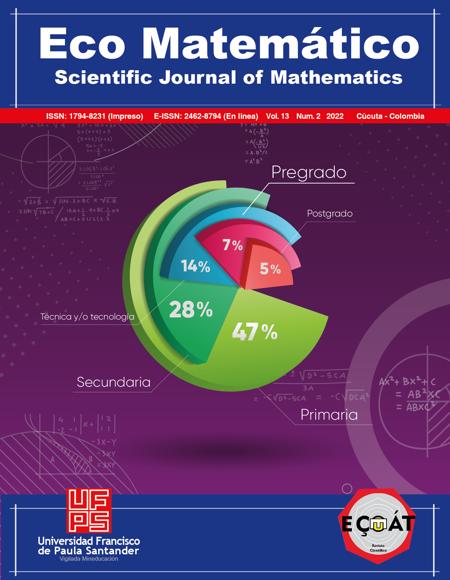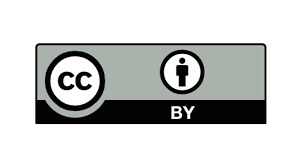Application of the autoregressive vector method to estimate the supply of eggs in Colombia
Aplicación del método de vectores autorregresivos para estimar la oferta de huevos en Colombia
Main Article Content
The purpose of the study was to evaluate egg supply through variations in its own price and of corn for the period 1998-2020 using a multivariate times series model. The vector autoregressive method was used for the empirical estimation and according to the results, the proposed time series were integrated of order one, statistically significant, inelastic and congruent with economic theory. The existence of a Granger causal relationship between the variables price of egg and corn with egg production was evidenced. The impulse response functions and the decomposition of the variance identified that the price of eggs is not the main variable that explains the movements of the supply of eggs, which can be argued that public policies related to prices are not an effective instrument to increase production
Downloads
Article Details
Alves, J., Melo, S., Lima, T. y Sobral, M. (2018). A influencia da taxa de cambio na exportacao de carne bovina e frango. Revista Agroalimentaria, 24(7), 77-90.
Ávila, F. (2020). El temor al libre comercio: Una experiencia vivida. Bogotá: Federación Nacional de Avicultores de Colombia. Documentos Avícolas No. 15. https://fenavi.org/publicaciones-programa-economico/documentos-avicolas-no-15/
Balanay, R. (2015). Analyzing price volatility and supply response of duck eggs in the Philippines for industry development implications relative to climate change adaptation. Annals of Studies in Science Humanities, 1(1), 35-45.
Barrientos -Marin, J. y Vasco-Correa, C. (2020). Producción de biocombustibles y empleo rural en Colombia 2009-2015 Apuntes del Cenes, 39 (70), 233 - 260. DOI: https://doi.org/10.19053/01203053.v39.n70.2020.10426
Bojnec, S. y Fertő, I. (2022). Do different types of Common Agricultural Policy subsidies promote farm employment? Land Use Policy, 112, 1-12. DOI: https://doi.org/10.1016/j.landusepol.2021.105823
Borisova, V., Terentyev, S., Stefanova, I., Sazonova1, E. y Kramlikh, O. (2022). Enrichment study of chopped half-finished poultry meat with calcium by introducing nutrients of animal and vegetable origin. Conference Series: Earth and Environmental Science. 949. doi: 10.1088/1755-1315/949/1/012140 DOI: https://doi.org/10.1088/1755-1315/949/1/012140
Bula, A. (2020). Importancia de la agricultura en el desarrollo socio-económico. Rosario: Puente Académico N. 16, Universidad Nacional del Rosario.
Correa, U., Ribeiro, B., Carvalho, F., Benedicto, G., Correa, E. y Correa, B. (2017). Chicken price transmission elasticity in Sao Paulo state market. Holos, 8, 76-88. doi:10.15628/holos.2017.4528 DOI: https://doi.org/10.15628/holos.2017.4528
Dickey, W y Fuller, D. (1979). Distribution of the estimators for autoregressive time series with a unit root. Journal of the American Statistical Association, 74(366), 427-431. doi:https://doi.org/10.2307/2286348 DOI: https://doi.org/10.1080/01621459.1979.10482531
Federación Nacional de Avicultores de Colombia. (2020). Boletín Fenaviquin. Programa de Estudios Económicos. Bogotá: Federación Nacional de Avicultores de Colombia. Documento No. 304.
Feisali, M. y Niknami, M. (2021). Towards sustainable rural employment in agricultural cooperatives: Evidence from Iran's desert area. Journal of the Saudi Society of Agricultural Sciences, 20 (7), 425-432. DOI: https://doi.org/10.1016/j.jssas.2021.05.004
Granger, C. (1969). Investigating Causal Relations by Econometric Models and Cross-spectral Methods. Econometrica, 37(3), 424-438. doi:https://doi.org/10.2307/1912791 DOI: https://doi.org/10.2307/1912791
Gujarati, D. (2009). Basic Econometrics. New York: McGraw-Hill.
Hernández, R., Fernández, C. y Baptista, P. (2010). Metodología de la investigación. México: McGraw-Hill Interamericana.
Johansen, S. (1988). Statistical analysis of cointegrating vectors. Journal of Economic Dynamics, 12(2), 231-254. doi:https://doi.org/10.1016/0165-1889(88)90041-3 DOI: https://doi.org/10.1016/0165-1889(88)90041-3
Johansen, S. y Juselius, K. (1990). Maximum likelihood estimation and inference on cointegration with applications to the demand for money. Oxford Bulletin of Economic and Statistics, 52, 169-210. doi:https://doi.org/10.1111/j.1468-0084.1990.mp52002003.x DOI: https://doi.org/10.1111/j.1468-0084.1990.mp52002003.x
Lutkepohl, H. (2005). New Introduction to Multiple Times Series Analysis. New York: Springer. DOI: https://doi.org/10.1007/978-3-540-27752-1
Ministerio de Agricultura y Desarrollo Rural. (2020). Cadena Avícola. Bogotá. https://sioc.minagricultura.gov.co/Avicola/Documentos/2020-06-30%20Cifras%20Sectoriales.pdf
Mose, L., Burger, K. y Kuvyenhoven, A. (2007). Aggregate supply response to price incentives: the case of smallholder maize production in Kenya. African Crop Science, 8, 1271-1275.
Nerlove, M. (1958). The Dynamics of supply response: Estimation of farmers´s response to price. California: Johns Hopkins Press.
Noelle, A., Durán, E. y Valenzuela, C. (2020). Huevos de tinamou (nothoprocta perdicaria): una nueva alternativa en Chile. Revista chilena de nutrición, 47(1), 135-14 DOI: https://doi.org/10.4067/S0717-75182020000100135
Organización de las Naciones Unidas para la Alimentación y la Agricultura. (2020). FAO Stats. Recuperado el 10 de diciembre de 2020, de http://www.fao.org/faostat/es/#data
Ozkan, B., Rahmive, C. y Kizilay, H. (2011). Supply response for wheat in Turkey. New Medit, 10, 34-38.
Phillips, P. y Perron, P. (1988). Testing for a unit root in time series regression. Biometricka, 75(2), 335-346. doi:https://doi.org/10.2307/2336182 DOI: https://doi.org/10.1093/biomet/75.2.335
Ramírez, M., Martínez, H., Ortíz, L., González, F. y Barrios, C. (2004). Relaciones de precios entre los diferentes eslabones de las cadenas productivas en Colombia. Bogotá: Ministerio de Agricultura y Desarrollo Rural de Colombia.
Sánchez, G. (2001). Transmisión de precios y cointegración en la industria avícola peruana. Debate Agrario, 53, 163-184.
Sanjuán, A. (2006). Metódos de predicción aplicados a series de precios agrarios. Aragón: Centro de Investigación Agroalimentaria de Aragón.
Sims, C. (1980). Macroeconomics and reality. Econometrica, 48, 1- 48. DOI: https://doi.org/10.2307/1912017
Stock, J. y Watson, M. (2001). Vector autoregressions. Journal of Economic Perspectives, 15(14), 101-115. doi: 10.1257/jep.15.4.101 DOI: https://doi.org/10.1257/jep.15.4.101
Tripathi, A. y Prasad, A. (2009). Estimation of agricultural supply response by cointegration approach. The Indian Economic Journal, 57(1), 106-131. doi:https://doi.org/10.1177%2F0019466220090106 DOI: https://doi.org/10.1177/0019466220090106
Trujillo, H. (2010). La metodologia del vector autorregresivo: presentacion y algunas aplicaciones. Scientia, 2(2), 103-108.
Utrera, G. (2004). Vectores autorregresivos e identificación de shocks de política monetaria en Argentina. Revista de Economía y Estadistica, Cuarta Época, 42(2), 105-126. DOI: https://doi.org/10.55444/2451.7321.2004.v42.n2.3809
Vanany, I., Hajar, G., Cyntia Utami, N y Muhamad Jaelani, L. (2021). Modelling food security for staple protein in Indonesia using system dynamics approach. Cogent Engineering, 8:1. doi: https://doi.org/10.1080/23311916.2021.2003945 DOI: https://doi.org/10.1080/23311916.2021.2003945







